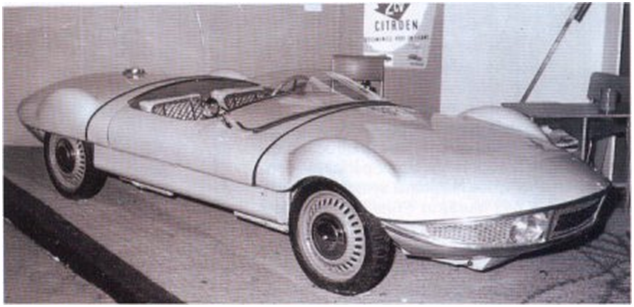de Pontac Coupe introduction Click this link for full article: de Pontac – Final
In 1955 Jean-Marie de Pontac created a rather different sportscar out of the humble Citroën 2CV that was produced initially in open and later closed coupe forms. But unlike the de Pontac Chateau, his car did not lead to an automotive dynasty! However, Jean-Marie became known for his inventive ideas and new automotive products.
De Pontac’s mid-section body is a single unit in combination with a centre-section chassis tub reinforced by a tubular backbone, all of which is described in some detail in the main article. And while the suspension is essentially 2CV, the springing medium is rather unusual too, to say the least.
Later on in its life, not long before production ground to a halt, de Pontac developed a revised model using the 851cc Panhard twin.
All versions look very similar and are built around the central tub, but they differ markedly in the use of materials and in details such as access to engine and rear boot area. What is quite an eye-opener is the way in which the roof and doors were contrasted for the barquette. The roadster was a very light car, but the later Barquette with its Panhard Twin and more complex bodywork added another 193 kilograms according to current folklore.
Another rather different aspect to the later coupe was the way in which it was presented at the Paris show with a screen printed layer embedded in the bodywork, and a whole fashion display that was built around the body-finish.
Perhaps surprisingly, a reasonable handful or two of the original open sports model were built, but the coupe did not fare so well – it was probably too complex for what it was…
However, De Pontac’s other automotive interest; that of go-faster bits for the 2CV (which also adorned his own sports cars) kept on going. This company was known as S.E.P.A.


